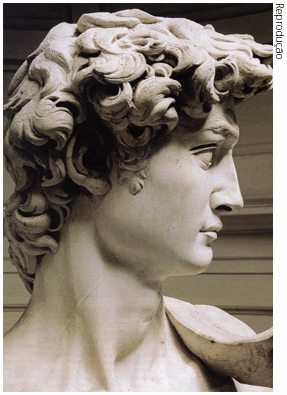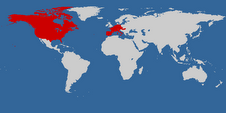Cristóvão de Mendonça was a Portuguese sailor and statesman, who was active in South East Asia in the 16.th century. He is known from a small number of Portuguese sources, notably João de Barros. Barros was one of the first great Portuguese historians − a «chronicler» −, most famous for his work «Décadas da Ásia» («Decades of Asia»), a history of the Portuguese empire in India and Asia, published between 1552 and 1615. Barros mentions that Cristóvão de Mendonça was the son of a Pedro de Mendonça, of Mourão, but his date of birth is not given. Mendonça later governed Hormuz as Captain-Major from 1527. He died there in 1532.
Mendonça is named by Barros as the captain of a ship that left Lisbon in 1519. He appears again in Barros’s account with instructions to search for Marco Polo’s legendary Isles of Gold. However, Mendonça and other Portuguese sailors are then described as assisting with the construction of a fort at Pedir, Sumatra, Indonesia. Barros promises to return to the topic of the voyage to the Isles of Gold, but does not.
In the late 20.th century Mendonça’s name became well known in Australian History discussions when it was connected to the Theory of Portuguese discovery of Australia by Kenneth McIntyre. While there are few Portuguese documents or maps beyond Barros that mention Mendonça, and none to directly connect Mendonça with Australia, McIntyre hypothesized that in 1521-24 Mendonça captained a fleet of three caravels which charted the east coast of Australia. McIntyre suggested that the voyage was kept secret because it would likely violate the ambiguous Treaty of Tordesillas, under which Portugal agreed that Spain would have exclusive rights to exploration in most of the Americas and the regions between the Americas and Asia. In addition he argued that many Portuguese records were lost in the disastrous 1755 Lisbon earthquake.
McIntyre’s identification of Mendonça as the likely commander of a Portuguese fleet that charted Australia’s east coast c. 1521-24 has also been accepted by other writers of the Theory of Portuguese discovery of Australia, including Lawrence Fitzgerald (1984) and Peter Trickett (2007). McIntyre suggested that one of Mendonça’s caravels sailed along the southeast coast of Australia and was wrecked somewhere near Warrnambool, Victoria, becoming the Mahogany Ship of Australian folklore − a myth? Although this wreck has not been seen since the 1880s, it is now often described in the Australian media as a Portuguese caravel or one of Mendonça’s fleet, largely on the basis of McIntyre’s theory.
In his 2007 book «Beyond Capricorn», science journalist Peter Trickett revealed other information relating to Mendonça’s life, including a fragment of stone engraved with Mendonça’s name found in South Africa and clearly dated to 1524, and a drawing that may show the 1519 fleet on its way to Goa. Trickett also connected Mendonça with the discovery of New Zealand’s north island.
Commenting on McIntyre’s theory in 1984, Captain A. Ariel suggested it was extremely unlikely any 16.th century mariner would have taken a voyage southwards down Australia’s east coast, through uncharted dangerous waters and against prevailing winds.
Associate Professor W.A.R. (Bill) Richardson of Flinders University, South Australia, believes the claim that Cristóvão de Mendonça sailed down the east coast of Australia is sheer speculation, based on voyages about which no real details have survived.
From Wikipedia (abridged)
... What about the so-called Delfim Map, which shows a lot of Portuguese toponyms on the Australian shores dating back as late 16.th, early 17.th centuries?...
I wonder...
RIC




















10 comentários:
Oi, Ric.
Tô com muita saudade de você.
Também andei uns dias fora da Internet devido a uns problemas com o meu computador. Mas tô voltando hoje.
Grande abraço pra você.
Se descobriram, calaram-se muito bem caladinhos, à boa maneira portuguesa.... quando faz asneira.
É que a um país como Portugal, não interessava nada ter um continente como colónia, ainda por cima cheio de autralianas boas como o milho LOL
Em contrapartida ficamos com metada da ilha de Timor, que nos dava muito mais jeito..
É muito bem provável que sim...
Mendonça is a fabulous name.
Whomsoever discovered Australia should have forgotten about it.
Fondle me.
Fondles Minge.
I've not heard of the Delfim Map before - and seemingly Google hasn't heard of it either.
I've learned to be mistrustful of maps which have miraculously survived unknown for centuries then suddenly appear.
There was the map of the Antarctic which fooled the "historian" Graham Hancock into writing a 400 page book on an Atlantis-like civilisation 8000 years ago.
There was the map of "Vinland", which proved the Vikings had discovered America centuries before Colombus.
Both were fakes, and a lot of good researchers were initially fooled.
I don't know - maybe a Portugese explorer did find Australia. Though I suspect the natives he found there had discovered it before him.
Este post faz mais pela promoção do país do que 1000 campanhas de allgarve juntas...
A todos os amigos comentadores, os meus agradecimentos!
Quanto à ideia bizantina e peregrina de «Allgarve»... meu caro NY, não me pronuncio: escreveria aqui coisas pouco dignas...
Quanto às australianas autóctones, meu caro TEDDY BEAR, estás a vê-las bem ou é de óculos que estarás precisado?... (Rsrsrs!!!)
As to the Delfim Map, I've seen some copies of it in an Australian book. Whether it's a fake as the others you've mentioned, dear CAPTAIN, or not, I just cannot say... (Thanks a lot for your comment, by the way, and MINGE's too!!!)
Abraços!
Hugs!
:-)
Mistérios da História?
Haverá sempre novas teorias para tentar explicar as coisas; onde estará a verdade?
Abraço.
I enjoyed the fondle.
I love the Portuguese history lesson!
Enviar um comentário